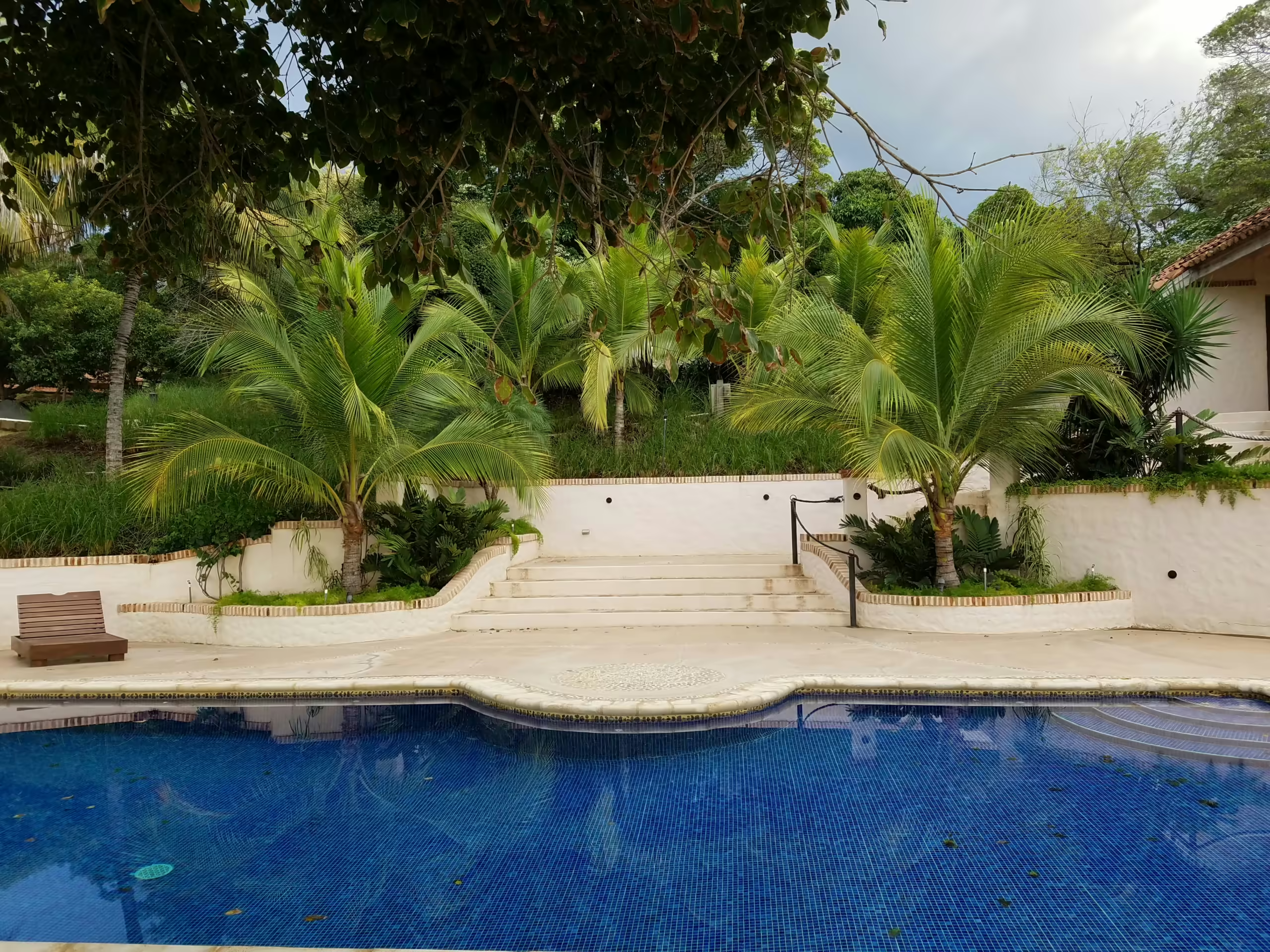Algae can significantly impact your pool by turning the water green, creating slippery surfaces, and reducing visibility. It promotes bacterial growth, posing health risks such as skin irritation and infections. Additionally, algae increase maintenance costs by clogging filters and requiring extra chemicals for removal. Regular pool cleaning, balanced chemicals, and proper filtration are key to preventing algae and keeping your pool safe and inviting.
Algae is one of the most persistent challenges for pool owners, often transforming a sparkling pool into an unsightly mess in just a few days. Beyond its unpleasant appearance, algae can compromise swimmer safety and strain your pool’s systems. Left unchecked, it can escalate maintenance costs and diminish the overall enjoyment of your pool.
In this guide, we’ll explore how algae impacts your pool’s health, aesthetics, and maintenance, along with practical tips for keeping it under control.
Understanding Different Types of Pool Algae
Not all algae are the same, and knowing the specific type growing in your pool is crucial for effective treatment. Here’s a breakdown of the most common varieties:
1. Green Algae
- Appearance: This fast-growing algae coats pool surfaces and clouds the water with a greenish hue.
- Cause: Low chlorine levels, combined with warm weather and poor circulation, often lead to its growth.
- Solution: Chlorine shock treatments and brushing are typically effective.
2. Mustard (Yellow) Algae
- Appearance: Powdery and yellowish, it clings to shaded areas and walls, mimicking pollen.
- Cause: This rare algae is more resistant to chlorine, thriving in poorly lit corners.
- Solution: Double-dose chlorine and specialized algaecides are required to eradicate it.
3. Black Algae
- Appearance: Appearing as dark spots, black algae embed their roots into porous surfaces like plaster.
- Cause: High pH levels and poor maintenance often allow this stubborn algae to take hold.
- Solution: Vigorous scrubbing with a wire brush and potent algaecides are necessary for removal.
Health Risks Posed by Algae in Pools
While algae might seem like a cosmetic issue, it can also present health risks. Algae create an environment conducive to bacterial growth, which can cause skin irritation, eye infections, and respiratory issues. Individuals with allergies, asthma, or sensitive skin are particularly at risk.
In severe cases, pools with heavy algae growth may harbor harmful bacteria that could lead to gastrointestinal infections if ingested. Maintaining an algae-free pool isn’t just about aesthetics—it’s about swimmer safety.
The Aesthetic Impact of Algae Growth
Algae can turn an inviting pool into an unappealing sight, with murky green or yellow water reducing visibility and making swimming less enjoyable. Slippery surfaces caused by algae growth can also pose safety hazards for swimmers, especially children.
For homeowners who entertain guests or rent out properties, a pool tarnished by algae can detract from the overall experience and even lower property appeal.
How Algae Increases Pool Maintenance Costs
When algae bloom, the time and money needed to maintain your pool increase significantly. Here’s how:
- Higher Chemical Costs: Treating algae often requires additional chemicals like chlorine, algaecides, and clarifiers.
- Increased Equipment Strain: Clogged filters and overworked pumps lead to premature wear and potential repairs.
- Labor Intensive: Removing algae involves extensive brushing, vacuuming, and repeated chemical treatments.
Preventative care is far more cost-effective than managing a full-blown algae infestation.
Proactive Measures to Prevent Algae Growth
The best way to deal with algae is to stop it before it starts. Here are key prevention strategies:
- Maintain Chemical Balance
- Keep chlorine, pH, and alkalinity levels within recommended ranges. A properly balanced pool is less hospitable to algae.
- Regular Cleaning
- Brush walls and floors weekly to disrupt potential algae growth. Vacuum debris to prevent organic material from accumulating.
- Optimize Filtration
- Ensure your filter runs daily for 8–12 hours to maintain water circulation. Clean or replace filters regularly for optimal performance.
- Shock Treatments
- Use shock treatments periodically, especially after heavy usage or rainfall, to eliminate any developing algae spores.
- Algaecides
- Apply preventive algaecides during peak algae seasons, such as summer, for an added layer of protection.
FAQs About Algae in Pools
1. Why does algae grow in my pool?
- Algae thrive in pools with warm temperatures, sunlight, unbalanced chemicals, or poor circulation. Low chlorine levels and debris also contribute to algae growth.
2. How do I get rid of algae in my pool?
- Brush affected areas, shock the pool with chlorine, and use algaecides. Run the filter continuously until the water is clear.
3. Can I swim in a pool with algae?
- Swimming in algae-infested water is not recommended. Algae can harbor bacteria, posing health risks such as skin irritation and infections.
4. How much does algae removal cost in San Diego?
- Costs typically range from $100 to $500, depending on the severity of the bloom and pool size.
5. Should I hire a professional to remove algae?
- While minor algae issues can be resolved with DIY methods, professionals are better equipped to handle severe infestations with specialized tools and expertise.
Final Thoughts
Algae growth in your pool not only affects its appearance but also poses health risks and increases maintenance costs. By taking preventative steps and maintaining a consistent cleaning routine, you can keep your pool algae-free year-round.
If algae become a persistent issue, don’t hesitate to contact Pool Logic San Diego. Our team specializes in effective algae removal and comprehensive pool care, ensuring your pool remains clean, safe, and inviting. Reach out today for professional assistance!



